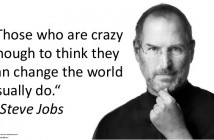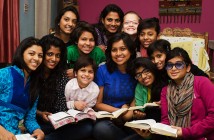What’s a Samaritan?
I was sitting in front of a group of young Christians and asked them ‘do you read the bible much?’
There was a few seconds of silence, and then some awkward sideways glances at each other, before one of them responded ‘not as much as I should’. I wasn’t really surprised by their answer, and when I then asked ‘how much do you think you should?’ they replied ‘at least once a day’.
There was a part of me that was really surprised by that, so I pressed a bit more, and asked ‘why do you think you should read it once a day’, the response was ‘because that’s what our youth pastor says’.
As I sat with around 20 different groups of young Christians in different cities across a 6 month period, with a film crew capturing the conversations as a part of a video series on youth and the Bible, a clear picture emerged. I took some of the replies and stories, and created the short narrative video called ‘What’s a Samaritan?’
Which of your young people come to mind as you watch the video?
Which comments and captions make you nod your head and think ‘yep -that’s my crew right there?’
The video captures some of the issues and challenges young Christians face as they deal with understanding and engaging with the Bible. One of the common issues that I heard was how young people who don’t like reading – or are illiterate – struggle to connect with the Bible. Even with all the easy-to-access Bible apps, they aren’t much good to someone who just doesn’t like reading.
A friend of mine is a youth pastor in a Salvation Army church, where many of his kids are from dysfunctional homes, and drop out ofschool as soon as they can. Many of them can’t read, or simply haven’t developed the comprehension skills required to understand what they’re reading. When we catch up for a coffee he tells me stories of how often on a Friday night he confiscates knives, calls the Police to break up gang fights, and provides the only healthy meal many of his kids will eat that week. They’re not really interested in sitting through a Bible study.
Engage the imagination
I asked him what Bible engagement looks like for him working with those sorts of kids each week. ‘Oh, that’s easy’ he replied…’I just tell Jesus stories to them. I stand up there and engage their imagination…I try and make these ancient stories of real people in real situations come alive for them in their minds’.
These young people would never sit and read chunks of scripture, but engage their imagination through good storytelling, and their eyes light up, their lives are impacted. He added that often the young people are so excited and ‘captured’ by the stories that they go home and re-tell them. Sometimes that ends with them being beaten up, as many of them come from violent homes, where any talk of God and church is not welcome.
What sorts of young people are you connecting with?
Are they more into playing football than sitting in a group reading their bibles? Would they prefer to ‘act out’ a bible story, and create different sub-plots as they do it, than listen to a Bible passage being read to them?
Understanding and tapping into the different learning styles of your young people is really important in engaging them with the Bible. At the very least, using a variety of different ideas and approaches to the Bible can make a huge difference in seeing the Bible ‘come alive’ for your young people.
Here are 3 profiles I have found helpful to explore when I talk with leaders about identifying different learning styles. As you read these, identify which ones generally represent your young people.
A Look at Visual Learners:
A typical visual learner uses visualization techniques to remember things. They often have a good sense of direction because they visualize maps and directions in their mind. Many prefer to read information in a textbook or on the whiteboard rather than listen to the teacher lecture. They also enjoy doodling and drawing. Visual learners typically use sight words in their everyday terminology. For example, they might say “Let’s take a look at this.” or “Let’s look at this from a different perspective.” They remember details including colours and spatial arrangements.
A Look at Auditory Learners:
Auditory learners learn best by listening and talking aloud. They typically notice and remember sounds. They are good at remembering things that they hear. They are also good with words and language. They often read to themselves as they study. They are also often distracted by noise and sounds.
A Look at Kinesthetic Learners:
Kinesthetic learners typically learn best by doing. They are naturally good at physical activities like sports and dance. They enjoy learning through hands-on methods. They typically like how-to guides and action-adventure stories. They might pace while on the phone or take breaks from studying to get up and move around. Some kinesthetic learners seem fidgety, having a hard time sitting still in class.
This article is written by Adrian Blenkinsop, Bible Society Australia. You can read more of Adrian’s blogs here.




